We speak English, Spanish and Portuguese
We speak English, Spanish and Portuguese

Clear, comfortable, and precisely planned—Invisalign® has redefined how many people choose to straighten their teeth. Rather than a one-size-fits-all approach, this system relies on custom-made clear aligners and advanced digital planning to move teeth gently and predictably. The result is a discreet orthodontic solution that fits into real lives without demanding drastic changes to daily routines.

Invisalign® for Teens

Invisalign® for Brides

Invisalign® for Travelers
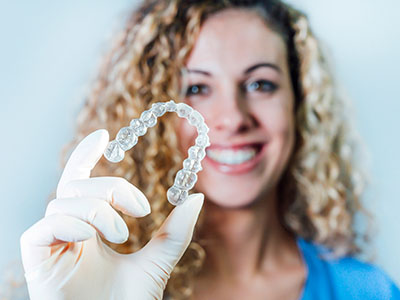
Before & After Photos
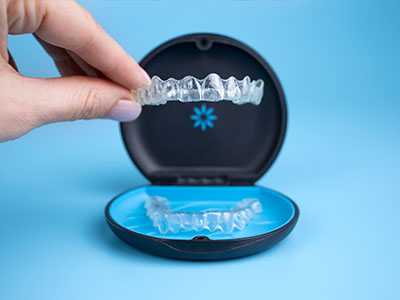
Invisalign® Videos

FAQs
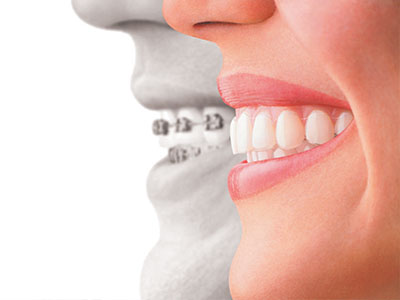
Invisalign® vs Braces

Invisalign® vs Direct-To-Consumer Aligners

Is Invisalign® Right For Me?
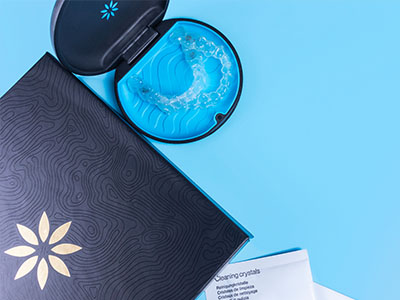
Invisalign® Costs
Invisalign® offers a subtle profile compared with traditional braces, which makes it especially popular with adults and image-conscious teens. Because the aligners are made from smooth, transparent material, they sit close to the teeth and are difficult to notice in conversation or photos. Many patients appreciate that their treatment is visible only to them, allowing orthodontic care to be integrated with professional and social obligations.
Beyond aesthetics, the design of clear aligners supports efficient oral hygiene. Aligners are removable for meals and cleaning, so patients can continue brushing and flossing normally without working around brackets or wires. This helps lower the chance of staining and makes it easier to maintain gum health throughout treatment.
Clinically, clear aligners address a wide range of alignment issues—from mild crowding and spacing to certain bite problems—using a sequence of precisely engineered movements. Each aligner in the series advances the teeth a small, controlled amount, producing gradual improvements that accumulate into the final alignment. For many people, this balance of effectiveness and discretion is the deciding factor when choosing an orthodontic solution.
The backbone of clear aligner therapy is digital treatment planning. Using precise 3-D scans and computer modeling, clinicians map out the desired tooth movements from start to finish. This virtual plan makes it possible to preview the outcome and adjust the approach before the physical aligners are produced, improving predictability and minimizing surprises during treatment.
Manufacturers refine aligner design using data from many treated cases, and contemporary systems include features to control rotations, tipping, and intrusion or extrusion when appropriate. The technology gives your clinician tools to orchestrate complex movements by sequencing small changes across successive aligners rather than relying on large, abrupt adjustments.
Because each set of aligners is fabricated to fit an individual’s anatomy, comfort and fit are prioritized from the outset. The custom nature of the trays reduces irritation and improves adherence, supporting steady progress toward the treatment goal while allowing for routine adjustments as needed by your clinician during review visits.
Your Invisalign® experience begins with a focused consultation where a clinician evaluates your bite and discusses goals. Modern digital scanners capture a detailed map of your teeth in minutes, replacing traditional impressions in many practices. Those scans form the basis of a customized treatment plan that shows the planned movement sequence and an estimate of treatment stages.
Once the plan is finalized, the aligners are manufactured to the exact specifications of the virtual model. You will receive a series of trays, each designed to be worn for a specified period before progressing to the next in the series. Regular check-ins with your provider allow them to monitor progress, make refinements, and provide the support necessary to stay on track.
Throughout treatment you’ll be supported by a team focused on comfort, function, and long-term stability. If attachments, elastics, or other adjuncts are recommended, your clinician will explain their purpose and how they help achieve the desired movements. The process is collaborative: clinicians combine their clinical judgment with the digital plan to produce the best possible outcome for your smile.

At your first visit, the focus is on understanding your goals and documenting the current condition of your bite. A thorough exam and digital scan let the clinical team analyze alignment challenges and propose realistic solutions. Conversations at this stage help align expectations about timing, required movements, and the sequence of care.

Modern intraoral scanners capture high-resolution 3-D images quickly and comfortably. Those images are translated into a digital model that serves as the blueprint for each aligner. The fabrication process uses exact specifications to produce a consecutive set of aligners, each engineered to advance the teeth a small amount toward the final position.
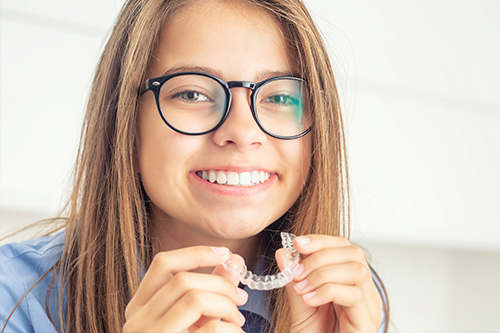
Aligners are designed to be worn most of the day, with short breaks for eating and oral hygiene. Most clinicians recommend a consistent daily wear schedule to keep treatment on track. Because trays are removable, patients can continue to enjoy meals and maintain normal brushing and flossing routines without additional obstacles.

Progress checks let your clinician confirm that the plan is unfolding as expected. If minor refinements are needed, adjustments are typically part of the normal course of care. These visits ensure that final alignment goals are met while identifying any areas that benefit from additional attention.
Explore the true stories and journeys of several Invisalign® patients
*Invisalign® is a registered trademark of Align Technology, Inc.
At Inspirational Smiles, our approach blends contemporary orthodontic technology with patient-focused care. We prioritize clear communication, explain choices in plain terms, and combine digital planning tools with hands-on clinical expertise to deliver predictable results. Our team works with patients of all ages, tailoring recommendations to fit individual lifestyles and oral health needs.
We serve a diverse community in Cumming, GA, and provide care in English, Spanish, and Portuguese to ensure everyone feels understood and supported. From initial consultation through retention, our clinicians collaborate with patients to set realistic goals and maintain strong clinical oversight at every stage.
If you’re considering clear aligner therapy, our team can walk you through how Invisalign® might address your needs and what to expect from the process. We focus on evidence-based methods and practical guidance so you can make an informed decision about your smile.
Ready to learn more about Invisalign® and whether it’s a good fit for your smile? Contact us for more information or to schedule a consultation.

There are many options for patients who want to avoid metal braces! The most popular alternative orthodontic treatment is Invisalign®, which are clear plastic aligners designed to straighten teeth. After an examination of your teeth, your dentist will determine which option is best suited to your wants and needs.
According to the Invisalign® website, the cost for treatment is approximately the same as the cost for metal braces. A portion of this cost may be covered by your insurance. Please call us to set up a consultation and discuss potential payment plan options.
The first step is to schedule a consultation with your doctor, so they can devise a treatment plan that is best suited to your individual dental needs. Once approved, you will receive your first set of aligners. Your doctor will then regularly monitor the movement of your teeth and new aligners will be ordered according to the progress made in your treatment plan.
Invisalign® aligners are made of clear, flexible plastic. The company received a patent for this material – SmartTrack® – to be used exclusively for Invisalign treatment purposes. These aligners are FDA approved and nearly invisible!
Your doctor will give you an estimate regarding how long your Invisalign® treatment should take, which will depend on your specific needs. The average length of time for treatment is approximately 12-18 months. However, some patients may see results far sooner. Remember to wear your aligners exactly as instructed by your doctor to obtain the best results.
Your doctor will most likely recommend that you wear retainers following your Invisalign® treatment. This is a precaution that will prevent your teeth from shifting back to their original positioning. It is important to follow your doctor's instructions exactly to ensure long-lasting results.
You must wear your aligners for up to 22 hours daily. You may remove them for eating, drinking and regular oral hygiene.
No. Unlike braces, you may eat whatever you like as long as you remove the aligners before eating. Prior to placing the aligners back on, it is important to brush your teeth and the aligners after you eat.
Like any orthodontic treatment, there is a short adjustment period. The more you speak with the aligners on, the quicker you will adjust.
There will be some pressure and minor discomfort for a day or two after each initial insertion. This is a sign that your teeth are moving sequentially into their final position.
It is recommended that you remove your aligners prior to chewing gum as the gum will stick to the aligners.
We discourage smoking with aligners as the cigarette smoke will tend to discolor them.
Brushing them with toothpaste will keep them fresh and clean.
Regular office visits are every five to six weeks. This will ensure that your Invisalign treatment is progressing as planned.
All orthodontic patients are instructed to wear their retainers at night indefinitely. Sleeping with your retainers in at night will ensure a healthy bite and maintain the new position of your teeth.
Yes, if their teeth, including second molars, have grown in completely.
Invisalign® is a clear aligner system that straightens teeth using a series of custom-made, nearly invisible trays. Each tray is designed to move your teeth a small, controlled amount so that successive aligners gradually shift teeth into the planned position. The system relies on digital treatment planning to translate clinical goals into a sequence of precise movements.
The trays are removable for eating and oral hygiene, which helps patients maintain normal brushing and flossing routines. Small attachments or elastics are sometimes used to help the aligners guide specific movements more effectively. Regular check-ins with your clinician ensure the plan is progressing and allow for adjustments when necessary.
Many adults and teens with mild to moderate alignment issues are suitable candidates for Invisalign®, including crowding, spacing and certain bite concerns. A comprehensive clinical evaluation is required to determine whether clear aligners can address the specific movements needed in your case. Complex skeletal problems or severe bite discrepancies may require alternative orthodontic approaches.
Patient cooperation is an important factor because aligners must be worn as prescribed to achieve predictable results. Your clinician will review your dental and medical history, take digital scans or impressions, and explain whether Invisalign® is the right choice for your goals. If additional therapies or adjuncts are needed, your provider will recommend them as part of a coordinated plan.
Digital planning begins with high-resolution 3-D scans that create a precise virtual model of your teeth and bite. Clinicians use specialized software to map each tooth movement from the current position to the desired outcome, which allows for visualization of the treatment sequence before fabrication. This virtual roadmap helps set realistic expectations and reduces surprises during active treatment.
The digital plan also enables finer control over rotations, tipping and vertical changes by sequencing many small adjustments across multiple aligners. If the initial plan requires refinement, the clinician can modify the virtual setup and request additional aligners to address areas that need more movement. Overall, digital planning enhances coordination between clinician judgment and the aligner manufacturer to improve clinical predictability.
Your initial consultation typically includes a discussion of your goals, a clinical exam and high-resolution digital scans of your teeth. The clinician evaluates your bite, looks for restorative or periodontal concerns that may affect orthodontic care, and explains the proposed approach in plain terms. Digital scans are fast, comfortable and often eliminate the need for traditional putty impressions.
After scans are taken, your clinician will review a proposed treatment sequence and explain what kinds of movements are planned and whether attachments or elastics will be required. You will be able to see a projected outcome and ask questions about timing, appointments and oral care during treatment. This visit establishes expectations and a timeline for the next steps if you decide to proceed.
Treatment length varies according to the complexity of the case, the number of teeth involved and the specific movements required. Many patients complete treatment within roughly six to eighteen months, while simpler alignments can take less time and more involved movements can take longer. Your clinician will provide a personalized timeline based on the digital plan and clinical findings.
Consistent wear of the aligners and adherence to clinical recommendations are important factors that influence how quickly progress is achieved. Periodic monitoring visits allow the clinician to confirm that the teeth are tracking as planned and to make refinements if necessary. Once active movement is complete, a retention phase is typically recommended to help preserve the new alignment.
Clean aligners regularly by rinsing and brushing them gently with a soft toothbrush and clear, nonabrasive soap; avoid hot water, which can warp the plastic. Maintain a consistent routine of brushing and flossing after meals before reinserting aligners to reduce the risk of staining and to protect gum health. Avoid chewing gum or consuming colored beverages while wearing the trays to preserve their clarity.
When you remove aligners to eat, store them in a protective case rather than wrapping them in a napkin to prevent loss or accidental damage. Bring your aligners to appointment visits so the clinician can assess fit and wear patterns, and follow any specific cleaning instructions provided by your care team. Regular professional cleanings and exams help monitor oral health throughout treatment.
Some patients experience a mild, temporary lisp when they first begin wearing aligners, but most adapt within a few days as the tongue adjusts to the trays. Because aligners are removable, they have minimal impact on eating and oral hygiene compared with fixed appliances. Many people find that aligners integrate smoothly into their daily routines with only brief adjustments at the start of treatment.
Clinicians generally recommend wearing aligners for the majority of the day to maintain tooth movement, and adherence to the prescribed daily wear time supports efficient progress. You can remove the trays for meals, sports mouthguards, and special occasions as directed by your provider. If you have job-related demands or performance concerns, discuss them with your clinician so they can suggest strategies that minimize disruption.
Attachments are small, tooth-colored bumps bonded to selected teeth to give the aligners better grip and control over specific movements. Elastics are rubber bands that may be connected to the aligners or attachments to address bite relationships by applying targeted forces. Both attachments and elastics are common adjuncts that help achieve movements that might be difficult with aligners alone.
Your clinician will explain the purpose of any attachments or elastics and demonstrate how to use and care for them. Attachments are removed once they are no longer needed, and elastics are typically worn according to a schedule tailored to the mechanics of your case. Proper use of these adjuncts supports predictable outcomes and helps avoid delays in treatment.
Progress is monitored through scheduled in-person visits, photos or digital scans that allow the clinician to compare actual movement with the planned sequence. These check-ins let your provider confirm that the teeth are tracking as expected, assess fit, and address any questions about comfort or care. Monitoring helps detect areas that may benefit from additional attention before they become larger issues.
If some teeth do not move as planned, the clinician can request refinements, which usually involve updated scans and fabrication of additional aligners to continue or correct the sequence. Refinements are a normal part of many treatment plans and are used to fine-tune the final alignment. At the end of active movement your clinician will discuss retention options to help maintain results over time.
To begin, schedule a consultation so an experienced clinician can evaluate your bite, discuss your goals and obtain digital scans if appropriate. During the visit the team will review whether Invisalign® is suitable for your needs, explain the treatment process and outline next steps in plain, patient-focused language. Inspirational Smiles provides care in English, Spanish and Portuguese to help make the assessment comfortable and clear for diverse patients.
If you choose to proceed, the practice will develop a customized digital plan and explain the expected sequence and follow-up schedule. Online scheduling and direct contact options are available to arrange appointments that fit your routine. Your clinician will partner with you throughout treatment to monitor progress and recommend retention strategies once active alignment is complete.

Looking to schedule your next dental visit or learn more about our services?
Getting in touch with Inspirational Smiles is simple! Our caring team is ready to help with appointment scheduling, questions about treatments, or any concerns you may have. You can call us or use our easy online contact form—whatever works best for you.
Take the first step toward a healthier, more confident smile today and experience the difference that personalized, compassionate dental care can make.